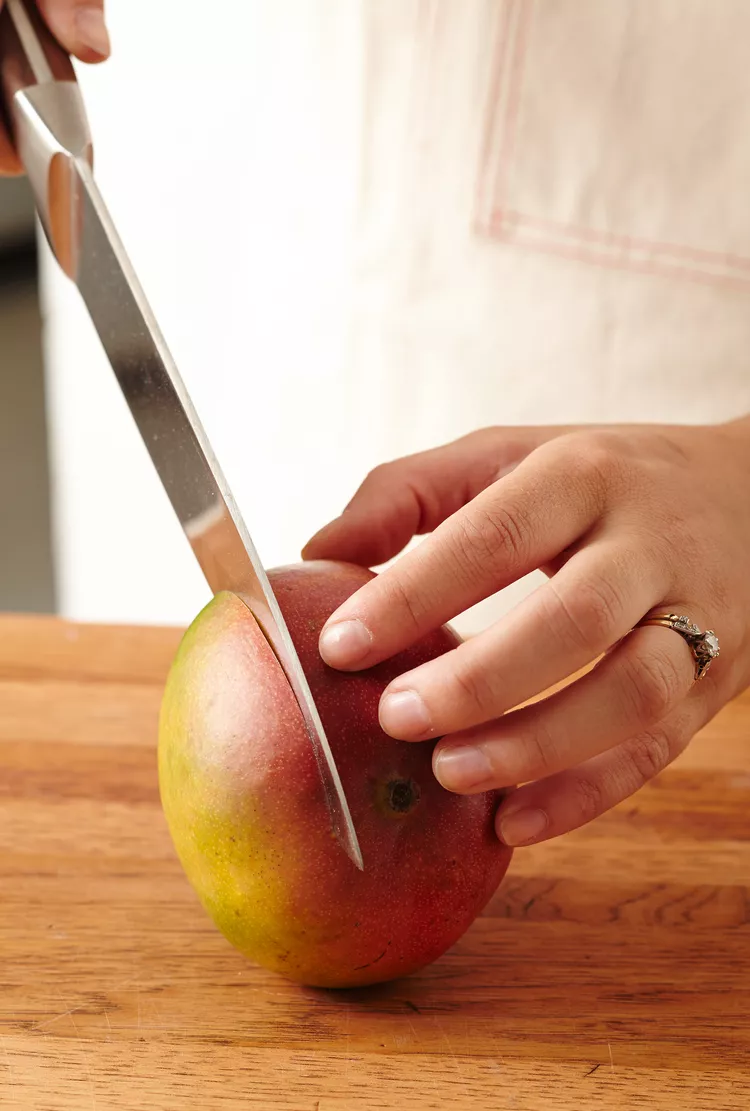Can You Eat Mango Skin?

Ranging in color from green to yellow and orange to red, mangoes have yellow or orange flesh surrounding a large, flat seed in the center. And while there are several different ways to cut a mango, the flesh of the fruit is typically separated from the peel, which is discarded. But do you really need to get rid of the skin after all?
Here, Sarah Brekke, M.S., Better Homes & Gardens Test Kitchen culinary specialist, breaks down everything you need to know about eating mango skin.
Sarah Brekke, M.S., Better Homes & Gardens Test Kitchen culinary specialist
Can You Eat Mango Skin?
Mangoes are sweet, juicy and bursting with bright tropical flavor. The large tropical stone fruit can be eaten raw or cooked, and its bold flavor shines in both sweet and savory recipes alike. Mangoes are also low in calories and highly nutritious, chock-full of vitamins, minerals, and fiber.
Although often discarded, the skins of many fruits and vegetables are not only edible but packed with additional nutrients. Mango skin, too, is edible and it also boasts some notable health benefits.
Benefits of Mango Skin
“Mango skins have higher concentrations of fiber, vitamins C and E, and antioxidants,” Brekke says. “Research has also shown that mango skins have high levels of compounds called triterpenes and triterpenoids, which may exhibit anticancer and antidiabetic properties.”
Why You Shouldn't Eat Mango Skin
So why is mango skin usually tossed out? Brekke says the skin is typically removed because it has a rough, leathery texture that many don’t enjoy eating. Mango skin can be difficult to chew, and it also has a slightly bitter flavor.
Mango skins also contain a chemical called urushiol, which can cause allergic reactions in people who are particularly sensitive to poison ivy or poison oak. So while mango skins are technically edible, the BHG Test Kitchen suggests you go ahead and peel the fruit anyway.
“Although there are some great nutrients found in mango skins, some of the drawbacks of eating the skins leads us to recommend that people peel the fruit in most cases,” Brekke says.
How to Serve Mango
As always, Brekke cautions to thoroughly wash all fruit before cutting and serving—especially if you plan to eat the skin. Like other fruits, mango skins may contain dirt, germs, or pesticide residues. And if you do choose to serve mango with the skin on, make sure to cut it into small pieces to make the tough, fibrous texture more manageable.
“If serving mango with the skin on, we’d recommend cutting the fruit into bite-sized pieces before serving so that the bites of skin are smaller and more easily chewed,” Brekke says.
Follow our easy step-by-step guide for cutting a mango, then add the fruit to your favorite drink, dessert or savory recipe. Chop some mango into a salsa to serve with air-fryer jerk pork skewers, stuff it into rice paper rolls with shrimp or pair it with peaches for a tropical take on the classic pie.